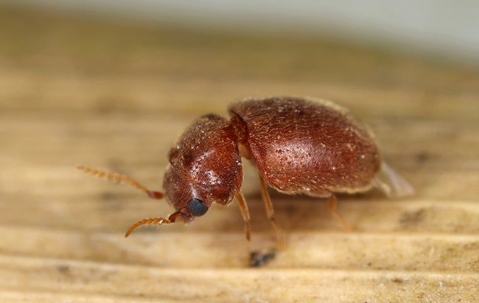How Do I Prevent Pantry Pests In Eugene?
Most people have an aversion to insects and creatures, and rightfully so. It’s uncomfortable being near them, as they often have scary looks and erratic behaviors. They are certainly a threat to be reckoned with because they usually harbor germs that lead to sickness. Health issues are almost inevitable when a pest that rapidly procreates is involved. Your Eugene home or business, as well as your personal belongings, may get wrecked too.
With all of this in mind, it’s crucial to prioritize pest remediation. Several creepy crawlers, such as pantry pests, are challenging to manage because of their daintiness, significant populations, and hiding spots. Pantry pests are tiny insects that sit in food and cabinets. Many folks don’t understand how they function or get around, making eliminating them a battle. Find out more about these bugs and how Ultimate Pest Control can help you conquer them.
What Are Common Pantry Pests & What Are The Hazards?
Drugstore, cigarette, and saw-toothed beetles are among the pantry pests that frequently invade domiciles and establishments. Drugstore beetles are 0.08 to 0.12 of an inch long and brown-colored. These bugs are oval-shaped and appear to be humped over. You might see some by windows and fixtures since they are attracted to light.
Cigarette beetles are about 0.10 of an inch long and circular. Their skin is either red, brown, or yellow. Having heads that point downward, it’s as if they’re bent. Despite this, they can fly exceptionally well. Keep your eyes open for their yellow-white larvae, which are visually similar to grub. Not only do these critters fixate on food, but they are also drawn to books and furniture too.
Saw-toothed beetles are 0.12 of an inch long. They have brown, flat bodies and six saw-like extensions that outline their frames. Akin to the cigarette subtype, the young in this group are yellow-white. In terms of size, they’re a bit smaller than the adults.
Additional key facts about pantry pests are:
- They lay eggs in meal packages after entering distribution centers and factories. Larvae are fiercely destructive.
- They attack pet food, rice, cereal, flour, fruit, grains, tobacco, dry goods, spices, and more.
- They aren’t carriers of parasites, pathogens, or diseases.
- They don’t sting or bite.
- They contaminate food with their webs and waste, which can change the flavor and support mold growth.
- Immediately throw things away that they’ve inhabited.
- Sightings of them or their larvae are a sign of infestation.
What Can Be Done To Prevent Pantry Pests?
Verifying that all food plants are doing their best with sanitation and quality isn’t possible. You won’t be able to supervise their pantry pest protocols. Regardless of this, you still have options.
There are several steps you can take to deter these pests and protect your health and those around you:
- Inspect all food packages and boxes, including pet fare. Discard anything old or shabby.
- Clean your pantries and cabinets with detail on a routine basis. Altogether remove items beforehand.
- Make sure that openings in foundations, ceilings, cabinets, and appliances are sealed well.
- See to it that door sweeps and screens are intact.
- Use containers with tight lids to store meals. Glass or plastic should be the preference.
- Don’t buy grocery goods without examining them for rips and tatters.
How Will Ultimate Pest Control Handle Pantry Pests?
Commercial insecticides for pantry pests will disappoint. They don’t have the potency to kill more than a few bugs. However, they can still be dangerous to employ. We at Ultimate Pest Control have safer, more effective pest control solutions registered with the Environmental Protection Agency.
Our highly trained technicians will apply industrial-grade interior and exterior treatments with biodegradable materials. Call today for a free inspection! We also offer commercial pest control to local businesses.

